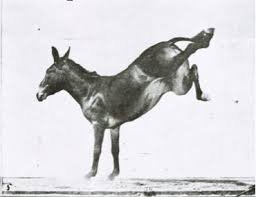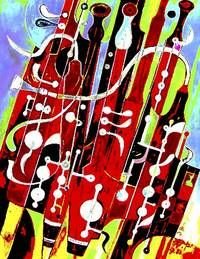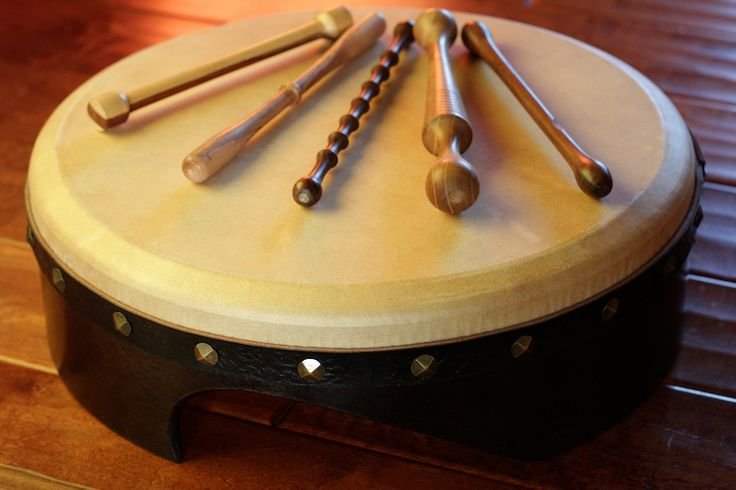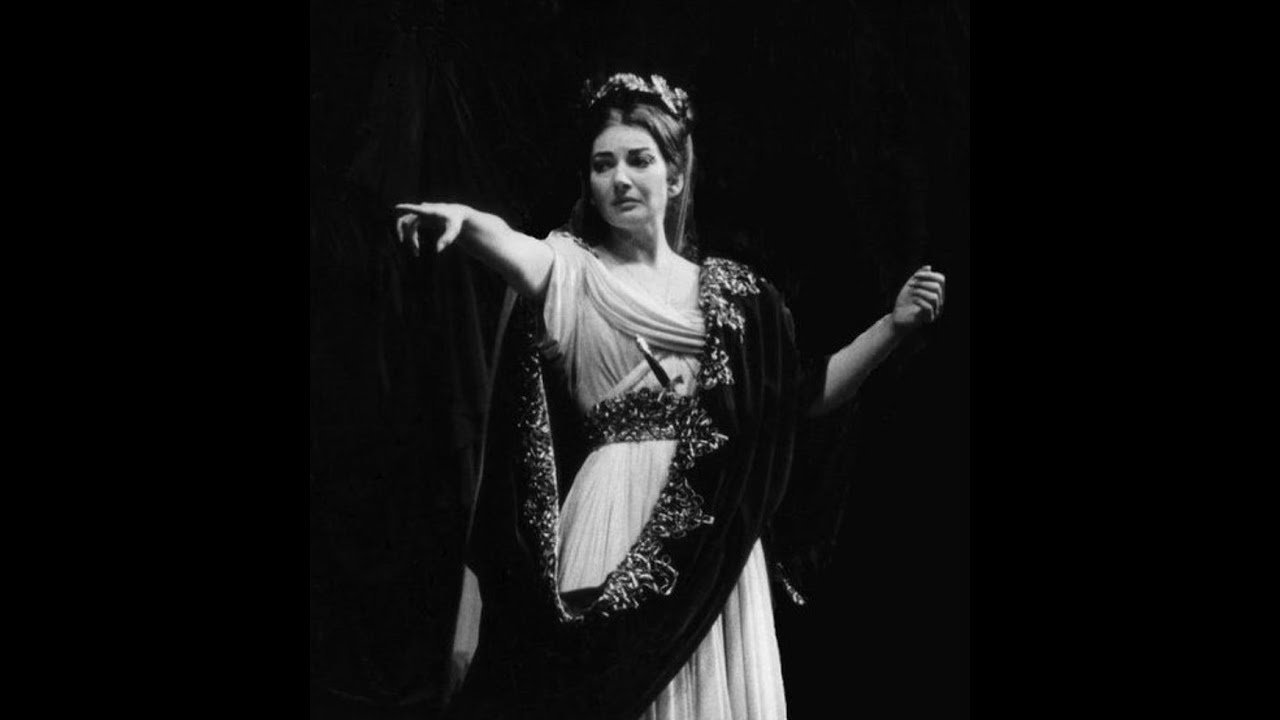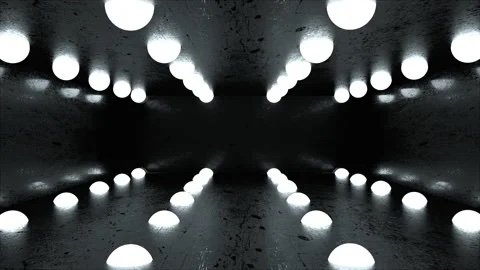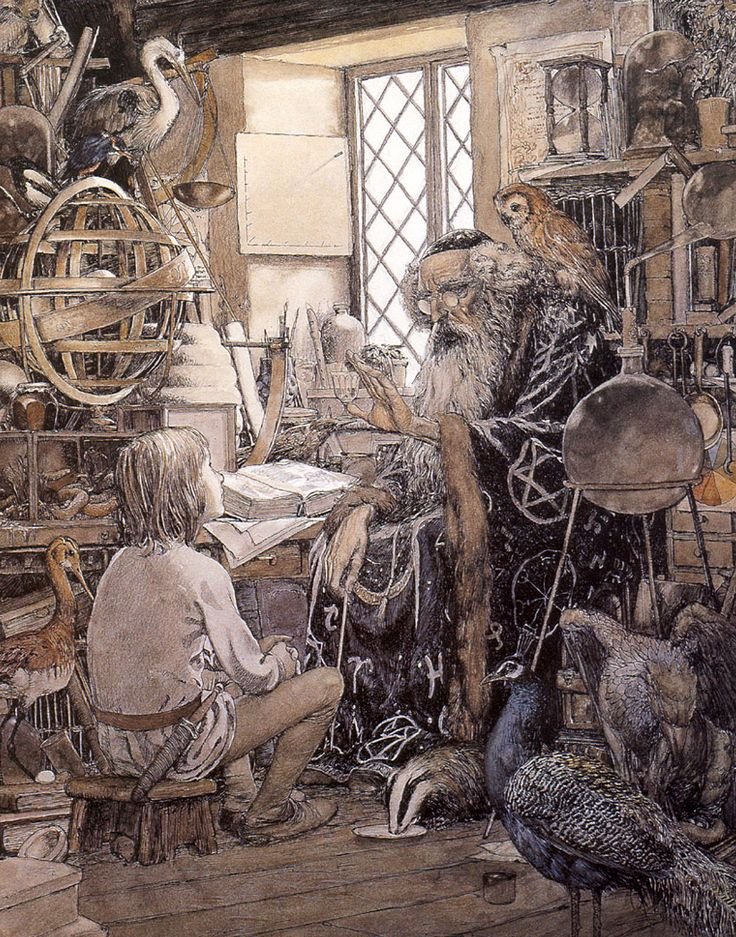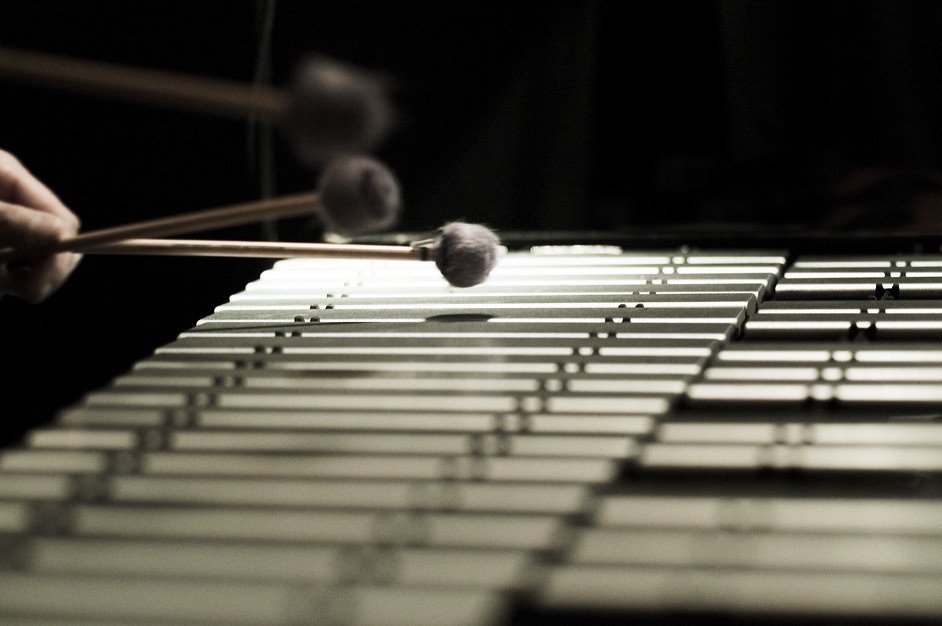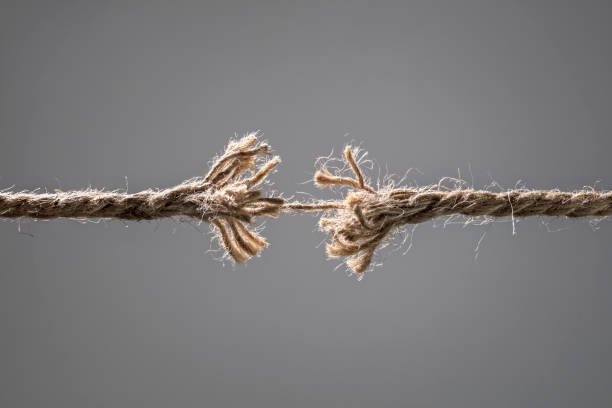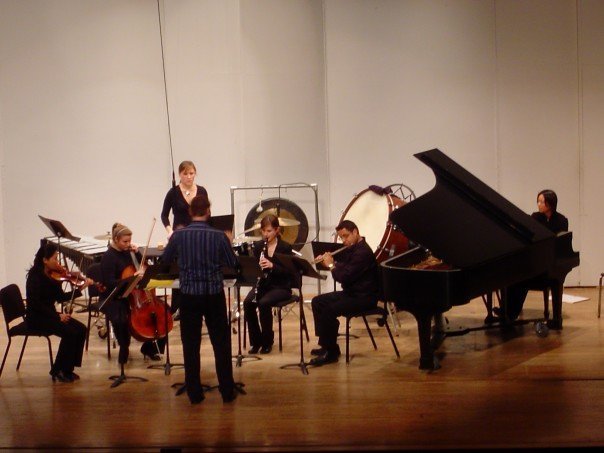
WORKS FOR CHAMBER AND SOLO MUSICIANS
TOCCATA AND …
-
Flute
Oboe
Clarinet
Horn
Bassoon -
Toccata and … combines a mambo and samba in the first half but pays particular attention to the inversion of those rhythms (aka “playing in the rests”). The second section pulls elements from the first into an ambiguous exploration of textures and timbres. By the piece’s end, what was frenetic energy, can now been heard as something new despite being the same pitches.
des monstres et prodiges
-
Flute I-II
Oboe I-II
B-flat Clarinet I-II
Horn in F I-II
Bassoon I-II -
I. Des Monstres...
II. The First - Glory of God
III. The Second - His Wrath
IV. The Third - Too great a quantity of seed
V. The Fourth - Too little
VI. The Fifth - Imagination
VII. The Sixth - Narrowness or smallness of the womb
VIII. The Seventh - Indecent posture of the mother
IX. The Eighth - A fall or blows
X. The Ninth - Heredity of accidental illness
XI. The Tenth - Rotten or corrupt seed
XII. The Eleventh - Mixture or mingling of seed
XIII. The Twelfth - Artifice of wicked spital beggars
XIV. The Thirteenth - Demons and Devils
XV. ...et prodiges
-
Seat the two quartets with some degree of spatial separation, if the venue permits, and in mirror image from a center point. For instance, from stage right to stage left Fl1, Ob1, Cl1, Hn1, Bn1, Space, Bn2, Hn2, Cl2, Ob2, Fl2.
Parts are purposeful in the programmatic intent with the cross voicings and tessituras.
All trills are half-step unless otherwise notated.
-
Des Monstres et prodiges [On monsters and marvels] by Ambroise Paré (c. 1510-1590) is a medical treatise from 1575. In it, Paré--a noted surgeon and medical philosopher--catalogued what he "found" to be the common causes of birth defects or as he called it "the 13 reasons for monsters." Paré's work is a fascinating read, epitomizing much of the 16th century and his own reconciliations between science and religion. This balance of observable fact and divine (or in some case profane) intervention is clear in his reasonings and in his famous quote: Je le pansai, Dieu le guérit ("I bandaged him and God healed him").
I stumbled across Paré's work during an exhibition at the Mütter Museum in Philadelphia, which houses a collection of medical oddities. I was immediately struck by the impressive woodcuts, the "Monster of Ravenna" in particular. Reading the plaques on which he listed the causes of birth defects (the titles of each movement) compelled me to seek out and read this book, and, consequently inspired this double wind quintet.
Commissioned by Steve Lewis and the Midwest Chamber Ensemble.
MULE KICK
-
Piccolo
Flute I-II-III-IV
Alto Flute
Bass Flute -
Mule Kick was commissioned by colleague Frank Fenley for the 2016 University of Central Missouri Honor Wind Symposium. With this in mind, I wanted to create a fun piece that incorporated an aspect of UCM culture. I settled upon the mascot, a bright red mule/jenny. Using the folk-tune “Woah Mule” as a basis for this fanfarish fantasia, the titular mule become more and more agitated as the piece progresses through a series of rip-roaring variations.
Vienna Riffs
-
Clarinet in A
Bassoon
Piano -
xxxx
TrebleMUsic
-
Flute
Oboe
B-flat Clarinet -
Treblemusic was commissioned by Rose Fife, Mary Stahlhuth, and Brent Ramsey to fill a void in wind trio literature for flute, oboe, and clarinet.
Composing for three fine players and three nimble instruments was the easy part; the challenge was the lack of a bass instrument. This hurdle was circumvented by working with the various timbres inherent across the instruments’ ranges. The result was a lower flute part than might be expected, a higher than usual oboe part, and a workhorse clarinet part that compliments the other two.
The premiere was on November 20, 2010 at Grace and Holy Trinity Cathedral in Kansas City, MO by the commissioning players.
LineMUsic
-
Horn in F
Bassoon
Piano -
xxxx
Black Hole Soundings
-
Violin
Contrabass (scordatura)
Harp (scordatura)
Piano -
Cosmos—
Accretion Disk—
Ergosphere—
Event Horizon—
SingularityAll movements elided
-
In 2003, scientists hypothesized that a black hole in the Perseus galactic cluster emits a B-flat 57 octaves lower than middle-C after studying ripples in the surrounding gases.
Black Hole Soundings is a quasi-sci-fi journey through the anatomy of a black hole, all courtesy of a single pitch: B-flat.
Chaconne and Dance
-
Playable by Bass Clarinet, Bassoon, Trombone, or Cello
Piano -
xxxx
Barbaresque
-
Oboe I–II–III
English Horn I–II
Bassoon I–II
Contrabassoon -
xxxx
Variations
-
Bassoon
Frame Drums -
xxxx
Suite from Dr. Jekyll and Mr. Hyde
-
Soprano (vocalise)
Flute
Violin
Viola
Cello -
Introduction: His Imagination Afire…
The Potion and The Transformation —
And now the question…
A Secret Place
At the Dance Hall
Seduction and His Imagination Afire Reprise
Scene Change and Millicent’s Waltz —
The Kiss
The Den of Inequity
Living room with the Carews
Children in the Street
Dénouement -
Commissioned by the Kemper Museum of Contemporary art for its Silent Cinema Series, this was a collaborative film score for live performance between myself and composers Nihan Yesil and John Robertson. Each composer scored a third of the 1920 film Dr. Jekyll and Mr. Hyde and the music contained in this suite is from the middle 1/3 of the film.
Hypermazurka
-
Cello
Percussion -
xxxx
PODGOLOSIA I – Glass, Metal, Voice
-
Percussion I
Percussion II
Percussion III -
xxxx
BANShee Reels
-
Flute
Clarinet
Percussion
Violin
Cello -
xxxx
Norma Variations
-
Flute I
Flute II -
Theme I. Lento: C-A-Sol-Ti-A D-Ti-\/-A
Merge I. Cavatina
Merge II. Allegretto misterioso
Merge III. Scherzo: Presto
Merge IV. Liquido con molto rubato
Merge V. Prestissimo possibile
Theme II. Cavatina: Casta Diva -
Norma Variations originally started off as a joke. As musicians we are constantly bombarded with foreign terms and names and so mispronunciations run rampant until someone corrects us. Such was the case in one of my classes when one of my classmates mispronounced Maria Callas. Jon Borja, one of the flutes who originally premiered the work spun around and his chair and just gave me this look that caused me to burst into laughter. And thus Norma Variations was born as Norma was one of Callas' most famous roles. Norma Variations is a musical mispronunciation. Through a series of abstractions using a solfegietto cavatto of "Casta Diva" where C equals pitch C, A equals A, S (Sol) equals G, etc. the original cavatina eventual emerges.
Habanera Ritmico
-
Cajón
Percussion I - timbales (high, low), conga, Chinese cymbal, suspended cymbals (high, medium, low), metal wind chimes, brake drum, guiro, flexatone
Percussion II -tom-toms (high, medium, low), splash cymbal, high-hat cymbals, sizzle cymbal, claves, castanets
Percussion III - bongos (high, low), kick bass drum, high-hat cymbals, caxixi, sandpaper blocks, maracas, vibraslap, flexatone -
Habanera rítmico was written for the percussion quartet, Schlaginstrumentengruppe, for their performances during the Kansas City Fringe Festival on July 30th, 2005. It is part of a four movement work in which the ensemble commissioned four composers to each contribute a movement with each member of the quartet acting as a soloist for one movement.
Habanera rítmico is based on the Habanera rhythm of Cuban dance. While the cajon (the solo instrument) is an instrument of Latin origin, other instruments like the caxixi, and cymbals create an energetic, international palette.
Kontakion
-
Marimba I
Marimba II
Marimba III
Marimba IV -
Kontakion, or hymn in honor of a saint, literally means "from a pole" around which a long poem was wrapped. The poem consisted of a short preliminary stanza followed by some 18 to 24 ikos, or strophes, which both end with the same refrain. Today, all that remains is the stanza - particularly called Kontakion - followed by the first ikos. These can be found in the canon at Matins, between Ode Six and Seven of the Byzantine Church. The Kontakion without the ikos is also sung at the Divine Liturgy and during the Hours. The St. Romanos the Melodist is the most famous author of kontakia and this piece is derived from one of his melodies.
OSCURO-SCINTILLA
-
Violin
Cello
Percussion
Piano -
xxxx
HALCYON Days
-
Alto Saxophone
B-flat Trumpet
Piano -
xxxx
Multitudes
-
Percussion
Piano -
xxxx
Very stable genius
-
Playable by any keyboard or mallet instrument
-
xxxx
five Metamorphoses after t.h. White
-
-
I - Perch
II - Ant
III - Owl
IV - Goose
V - Badger -
Five Metamorphoses after T.H. White is a companion piece to the famous solo oboe work by Benjamin Britten, Six Metamorphoses after Ovid. Whereas Britten captured the mythological characters in the midst of their transformations, the process has already been completed at the start of each movement of Five Metamorphoses. Each of the short movements is then a reflection on the short quote found as a subtitle. The process of turning Wart into King Arthur wasn’t without its bumps and bruises. These metamorphoses were pivotal in that eventual transformation.
Five Metamorphoses was commissioned by and written for my friend and colleague Sheri Mattson.
Etudes for Solo Vibraphone
-
Vibraphone
-
Item description
-
xxxx
Fray
-
Available for violin, viola, or cello
-
xxxx
Furies
-
Timpani (4 drums)
-
xxxx


